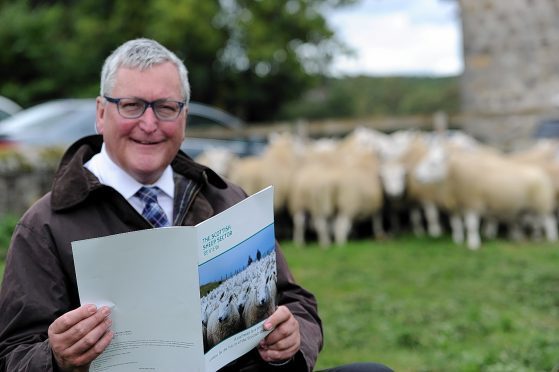Scottish Government yesterday said it accepted the findings of a report into the future of the sheep sector, nine months after it was published.
The report – A pathway to a profitable future: a vision for the future of the Scottish sheep industry – was launched on a Grantown farm on August 31, 2016.
It was devised by an industry group led by award-winning Highland sheep farmer John Scott, of Fearn Farm, Tain.
The report outlined 24 recommendations to boost Scotland’s sheep farming sector including calls for a study into the skills gap in the sector and for industry to come together to develop and deliver a sheep-farming modern apprenticeship programme.
The group also called for all farmers and crofters to have access to broadband and mobile connectivity, and for simple tools to be developed for industry to allow businesses to benchmark against each other.
In a belated response to the report, Mr Ewing yesterday thanked Mr Scott and his team for pulling together a “comprehensive and ambitious set of recommendations” for the sector.
“I accept the report’s findings and can confirm that work is already underway to deliver on these including bringing broadband to every farmer and crofter, and continuing to support a significant industry-led research programme,” said Mr Ewing.
“I can also confirm that we will undertake work to consider the scope and desirability of introducing new price reporting and classification arrangements.”
He said the report’s vision for a successful sheep sector in Scotland would only be achieved if each link in the supply chain became profitable.
Mr Ewing also sounded a warning over the impact of Brexit on the sector.
“Scotland’s sheep sector is worth more than £200million a year to the rural economy and is renowned the world over for its quality meat and textile products. However, the sector faces an uncertain future with farm revenues falling and many farmers relying heavily on support and trading conditions that are now at risk from Brexit,” added Mr Ewing.
Meanwhile, report author John Scott said a steering group formed following the publication of the report had now been formed and held its first meeting.
The group comprises: National Sheep Association Scottish development officer George Milne; Highland Perthshire farmer Alex Brewster; Farm Stock Scotland chairman Ian Watson; Quality Meat Scotland head of economics services Stuart Ashworth; NFU Scotland president Andrew McCornick; and a representative from the Scottish Government. Mr Scott is the chairman of the group.










